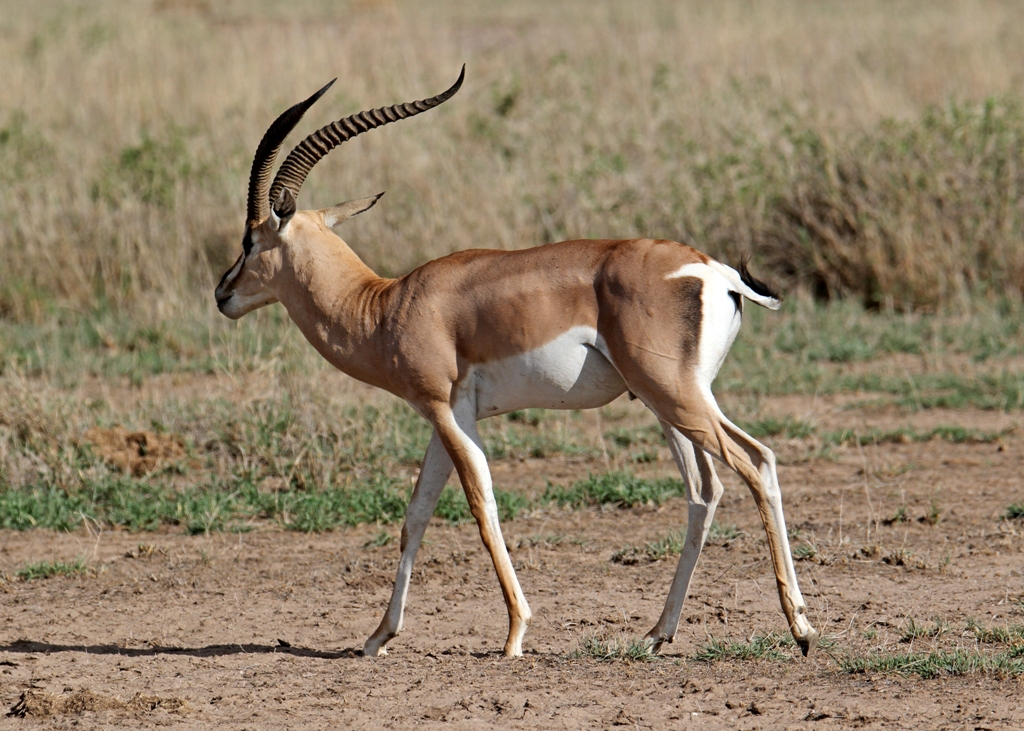


Amboseli National Park birding is wonderful, measuring 392 kilometers squared. The park is situated on the plains south of Kenya, below the ice-topped peak of Africa’s highest mountain, Mount Kilimanjaro The two peaks of Kilimanjaro can be seen clearly from the Kenyan side. Kibo Peak is 5895 meters, and across the saddle to the left Mawenzi Peak is 5268 meters.
Mount Kilimanjaro erupted some 2 to 4 million years ago and from it, a series of lava flows spread across the low ground as far as the Eremito Ridge. The Amboseli basin shows various plant associations varying in their salinity tolerance. Despite the limited rainfall, (350-400mm annual rainfall) a system of swamps fed by Mount Kilimanjaro montane forest catchment supports a splendid diversity of birds and mammals, controlled in terms of biomass and visibility by a population of some 1,500 African Elephants. The elephant population in Amboseli National Park is one of the few places left on earth that enjoys a relatively undistracted existence in their natural conditions.
The Amboseli National Park year can be divided into four seasons: the long rains from March to May, the long dry season from June to October or November, the short rains from November to December, and the short dry season from January to March. Short rains are frequently more intense than long rains. The mean monthly maximum temperatures reach 34 degrees in February dropping to 26 degrees in June, the coolest of the year when the mean monthly minimum temperatures fall to 12 degrees, and at night may fall to 4 degrees. This is due to a combination of cool air from Kilimanjaro, the white soil that absorbs little of the daytime heat, and the high night radiation resulting from sparse vegetation in the park. During the drier season, a frequent feature is a large number of dust devils and late afternoon dust storms. Amboseli National Park is characterized by one feature; the great diversity of animals and habitats within such a confined area
Amboseli National Park boasts more than 300 bird species, supported by different habitats found within the ecosystem. The area below the mountain is in a rain shadow and usually a flat dusty pan with alkaline soils

Amboseli has several small lakes with the main ones being Kioko Lake, Simek Lake, Conch Lake, and Amboseli Lake, in these basins the water is almost always present, except in times of drought, but the depth is never more than 50 centimeters. Lake Amboseli is usually dry most of the time, its expanse shimmers in the heat, and dust devils fill up the sky. The lake is situated in the western section of the park, compared to the other lakes in the park; it covers a very large area. There are several marshes fed by underground springs that attract a large number of wildlife, such as Elephants and Hippos, Wildebeests, Burchell’s Zebras, Bohors Reedbucks, Spotted Hyenas, Cape Buffalo, and many waterbirds
Amboseli National Park is an ideal birding destination in Kenya with more than 420 bird species recorded The marshy swamps are great for water birds such as Jacanas, Avocets, Crakes, Waders, and countless Ducks species. Flocks of Lesser Flamingos are common during wet seasons (March to May and October to December). The Amboseli grassland areas offer some fantastic and rewarding birding, birds such as Hartlaub’s Bustard, Double-banded Courser, African Pipit, and Pangani Longclaw. For a better birding adventure in Amboseli National Park, having stop-overs on the way to the park scores a lot of fascinating birdwatching experiences, the road drive from Emali town is very productive, so be on the look-out for Pale Chanting Goshawk perching on electricity poles, White-headed Mousebirds feeding on the bushes. Birdwatching safari in Amboseli National Park is done while in the car, but there are designated places, like the observation point, campsite, and picnic sites where alighting from the vehicle is allowed

Common Birds in a Birdwatching Tour in Amboseli National Park: Common Ostrich, Fulvous Whistling-Duck, Spur-winged Goose, Knob-billed Duck, African Pygmy Goose, Southern Pochard, Hottentot Teal, Helmeted Guineafowl, Harlequin Quail, Coqui Francolin, Lesser Flamingo, Greater Flamingo, Yellow-throated Sandgrouse, Chestnut-bellied Sandgrouse, Hartlaub’s Bustard, African Water Rail, Grey Crowned Crane, Spotted Thick-knee, Common Ringed Plover, Kittlizt’s Plover, Long-toed Plover, Temminck’s Stint, Common Greenshank, Curlew Sandpiper, Temminck’s Courser, Double-banded Courser, Saddle-billed Stork, Dwarf Bittern, Black-winged Kite, Bateleur, Brown Snake Eagle, White-backed Vulture, Ruppell’s Vulture, Lappet-faced Vulture, Martial Eagle, African Marsh Harrier, Shikra, Pearl-spotted Owlet, Blue-naped Mousebird, Von der Decken’s Hornbill, Green Woodhoopoe, Lesser Honeyguide, Red-and-yellow Barbet, Little Bee-eater, Lilac-breasted Roller, Striped Kingfisher, African Pygmy Falcon, Lesser Kestrel. White Helmetshrike, Brubru, Sulphur-breasted Bushshrike, Golden Pipit, Pygmy Batis.

A full-day birding in Ol Pejeta Conservancy offers a wealth of possibilities, the park hosts exciting bird species and special animals. Ol Pejeta exhibits such a versatile geography, endowed with endless rolling plains, rivers, marshes, and wetlands which are responsible for the great variety and abundance of birds and mammals
